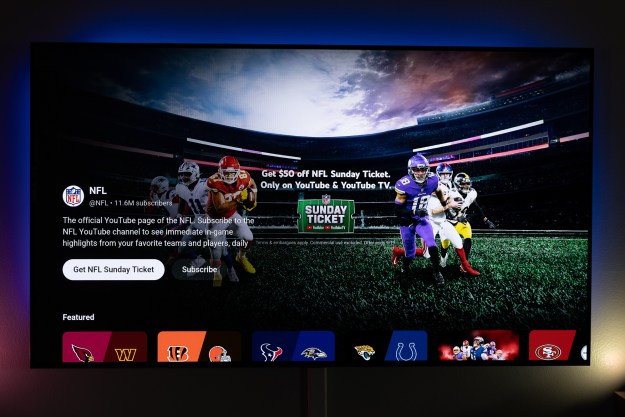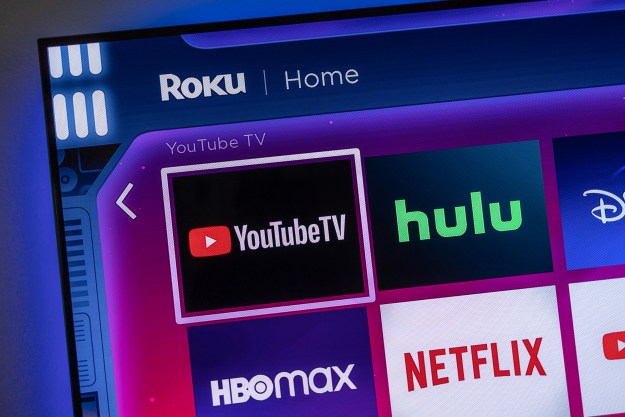Walmart just bought Tv Maker Vizio for $2.3 billion. Now, I wouldn’t be surprised if you just scrolled right past that particular headline when the news dropped on February 20. I am not here to try to convince you that you should care.
But I do think that you’re going to want to know what’s about to happen to your smart TV, no matter what brand it is.
The ripple effect
OK, so Walmart bought Vizio. Big deal.
Well, yeah, actually, it is literally a big deal. One worth more than $2 billion. That alone tells us something.
And while I understand some folks who are really into TVs — myself included — may be curious about what that means for Vizio TVs in the future, I don’t think that’s nearly as interesting as what Walmart could do through Vizio TVs. And perhaps more important is what the ripple effect will likely be across every smart TV platform.
It doesn’t matter whether you own a Vizio TV, Roku TV, Google TV, Fire TV, Samsung TV, or LG TV. What Walmart is about to do could have a profound effect on your TV-watching experience at home.

And I’m about to make that very real for you.
Oh, and if you own an Apple TV (which is a peripheral and not actually a TV …), you may be safe — for now. But we’ll get back to that.
Follow the money
So, we’re going to kick this off by doing what one should always do when a market-shifting event happens. Let’s follow the money!
Vizio has a storied history. It grew pretty quickly. In 2006, it brought in about $700 million and nearly tripled that in just one year to an estimated $2 billion in revenue. In 2014 and 2015, Vizio then pulled off a couple of big acquisitions that helped make its SmartCast smart TV platform what it is today. That’s going to be important in a minute.

In 2015, the Federal Trade Commission (FTC) brought charges against Vizio, claiming it was collecting non-personal data on its TV owners and selling it to advertisers, all without ever disclosing that to its customers.
Vizio in 2017 had to delete all that data and pay a $2.2 million fine. But consumers apparently weren’t too upset about it, because Vizio kept on selling TVs. Lots of TVs.
In 2015, a now-defunct Chinese brand called LeEco almost bought Vizio for $2 billion dollars. China blocked that, so it didn’t happen. But Vizio continued to sell TVs. That’s lots of TVs going into people’s homes.
It’s estimated that Vizio has some 18 million active users of its smart TV platform.
In fact, right up through 2020, Vizio was the No. 2-selling TV brand in the U.S. Since then, Vizio fell to the number 4 or 5 slot, depending on which report you reference.
Why does this matter? It tells us that Vizio’s status as a TV brand has fallen quite a bit in the last three years. Now, one could understandably think that meant that Vizio needed help — and maybe it did. But I don’t think Walmart showed up to help Vizio. I think what’s happening here is that Vizio is going to help Walmart. In fact, its press release announcing the acquisition pretty much made that clear.

While Vizio’s sales may have slipped over the past few years, it still put a massive number of TVs into homes across the U.S. over the past decade. And because folks still don’t replace their TVs all that often, Vizio has some 18.5 million active users of its smart TV platform, according to the company’s fourth-quarter earnings report. And Vizio has mountains of data on those people. Maybe you’re one of them.
So when Walmart bought Vizio, it bought over 18 million advertising screens in U.S. homes that it could control. And in doing so, Walmart became one of the top 20 ad sellers in the world outside of China. That’s … huge. No wonder this deal went through for $2.3 billion.
New retail opportunities
The notion that Walmart bought Vizio not because it wanted to make TVs, but because it wanted to buy advertising screens already in some 18 million homes (and it’s almost certain that number is going to grow exponentially, because Walmart moves a lot of products) is not an original take. It’s actually not even that hard to come to this conclusion.
But let me make this a whole lot more real for you right now.
Let’s take a break from Vizio and Walmart. Turn on a TV and see what happens when you go to watch a show on Amazon Prime Video.

When I tried this earlier, I got an ad for Turbo Tax, which is appropriate because it’s tax time, And I also got an ad for … a Blink camera. Guess who owns Blink cameras? Amazon.
Amazon is showing me an ad for a product it not only sells, but also makes. Talk about self-serving.
I also got an ad for shopping on Amazon. But not just shopping on Amazon — shopping for a Hyundai on Amazon. That’s a two-for-one ad right there!

After 18 years of Amazon serving up video content with no ads at all, the retail giant, which isn’t having trouble selling products, decided to turn on ads to help convince me to buy more products on Amazon, as well as any other products its advertisers might want me to buy. Or, I can pony up $3 to skip the ads and get HDR and Dolby Vizion HDR back. But that’s a rant for another day.
Anyway, Amazon Prime Video is now selling me retail products. And it’s already happening on Fire TV devices as well. You don’t even have to be watching a show to see an ad anymore.
Now, let’s get out of the Amazon app and into the Google TV platform. I may have to deal with ads in these streaming services, but at least my precious Google TV platform is mostly ad-free, right? And the ads we do see are for content I might want to watch. They aren’t trying to sell me retail products, right?
Retail advertising, guys. It’s about to explode.
Wrong. Just the other day, when I turned on a Sony QD-OLED TV running Google TV, the first thing I saw was an ad for a Kia EV6. It was made to look like a movie or TV show I could watch. I almost clicked on it by accident, but I didn’t even need to because Google TV ran a full-motion preview of it, so I saw the ad anyway.
Retail advertising, folks. It’s about to explode even more than it already has.
Amazon knows what I like to shop for and buy. Google knows what I like to shop for. Both of them are now serving me ads that are targeted to my preferences. And what do we know about advertising? It works. It always works.
So … how do you suppose Walmart would like to increase the number of retail products it sells? How do you suppose Walmart would like to grow even bigger than the behemoth it already is?

Walmart product ads on Vizio TVs. It’s coming. And it probably won’t even take that long for it to begin.
Pretty soon, Vizio TV owners are going to turn on their TVs to binge True Detective: Night Country. And before they can even navigate to the Max app, they’ll be confronted by an ad for a baby monitor because someone in the house bought diapers the day before.
What’s next for Vizio TVs
I’ll get back to the advertising nightmare shortly. Let’s set that madness aside for a moment and switch gears to talk about Vizio’s TVs themselves. What’s going on there? Will the TVs go down in quality? Up in quality? Stay the same?
In short, I don’t know. More importantly? I don’t think Walmart or Vizio knows yet, either.
There may be some tentative plans right now. In these buyouts, it’s not uncommon for the buyer to tell the company’s employees that got bought that they are “committed to preserving what has made Vizio such a powerful brand, blah, blah, blah, lip service, blah.”

But in the end, I think what happens to the Vizio hardware is TBD. One reason I don’t feel super optimistic about things is that there was zero mention of Vizio’s hardware in the press release that Walmart sent out. The release was mostly centered around SmartCast, which Vizio maintains is the platform that supports the all-new smart TV platform called Vizio Home Screen.
Anyway, I don’t anticipate Vizio putting out another P-Series Quantum X TV ever again. I think Vizio is a better name for a TV than “onn” with two N’s — that’s Walmart’s in-house brand — and that kind of name shows how much Walmart cares about the TV’s performance.
OK, but what about everyone else?
So, we’ve already covered that it’s not just the streaming services running retail ads — it’s on platforms now as well. Amazon does it, Google does it. Walmart can now do it. What about Roku, Samsung, and LG?
Well, they’ve been running ads, too. But they haven’t been quite so focused on retail product ads, at least not in my experience. But that will have to change. Advertisers are going to go where the eyeballs are. And whoever has the eyeballs is going to want to get that ad money.
We will be getting ads on our TVs, even before we start watching something.
Look, this was already happening. It’s just that Walmart is a market mover. When Walmart does something, everyone else reacts. So now, not only will we be dealing with ads on streaming services — unless we pay a premium to get rid of them — but we will also be getting ads on our TVs, even before we start watching something.
Welcome to the new era of streaming TV. It’s now officially worse than cable. But that’s only until cable boxes start doing the same thing because, as we know, cable operators are already struggling, and they love to make that money, too.
And let’s not forget that there is now a TV you can get for free — you just have to deal with this whole second screen that plays nonstop ads. Oh, you hadn’t heard of that? Yeah, it’s a thing. And it’s actually pretty good.
Is there anywhere that’s safe? Well, for now, at least, Apple isn’t selling ads to third parties for display on its Apple TV 4K boxes. Don’t want ads on your home screen? Get an Apple TV 4K. But might even the great Apple climb down off its high horse at some point?
Editors' Recommendations
- Walmart buys Vizio — and its ad and data business — for $2.3 billion
- Philo is now available on Vizio TVs
- The hidden costs of buying a 4K TV are way higher than you think
- Amazon is giving you 6 months of MGM+ when you buy a new Fire TV
- You Asked: Why we don’t buy the TVs we review




